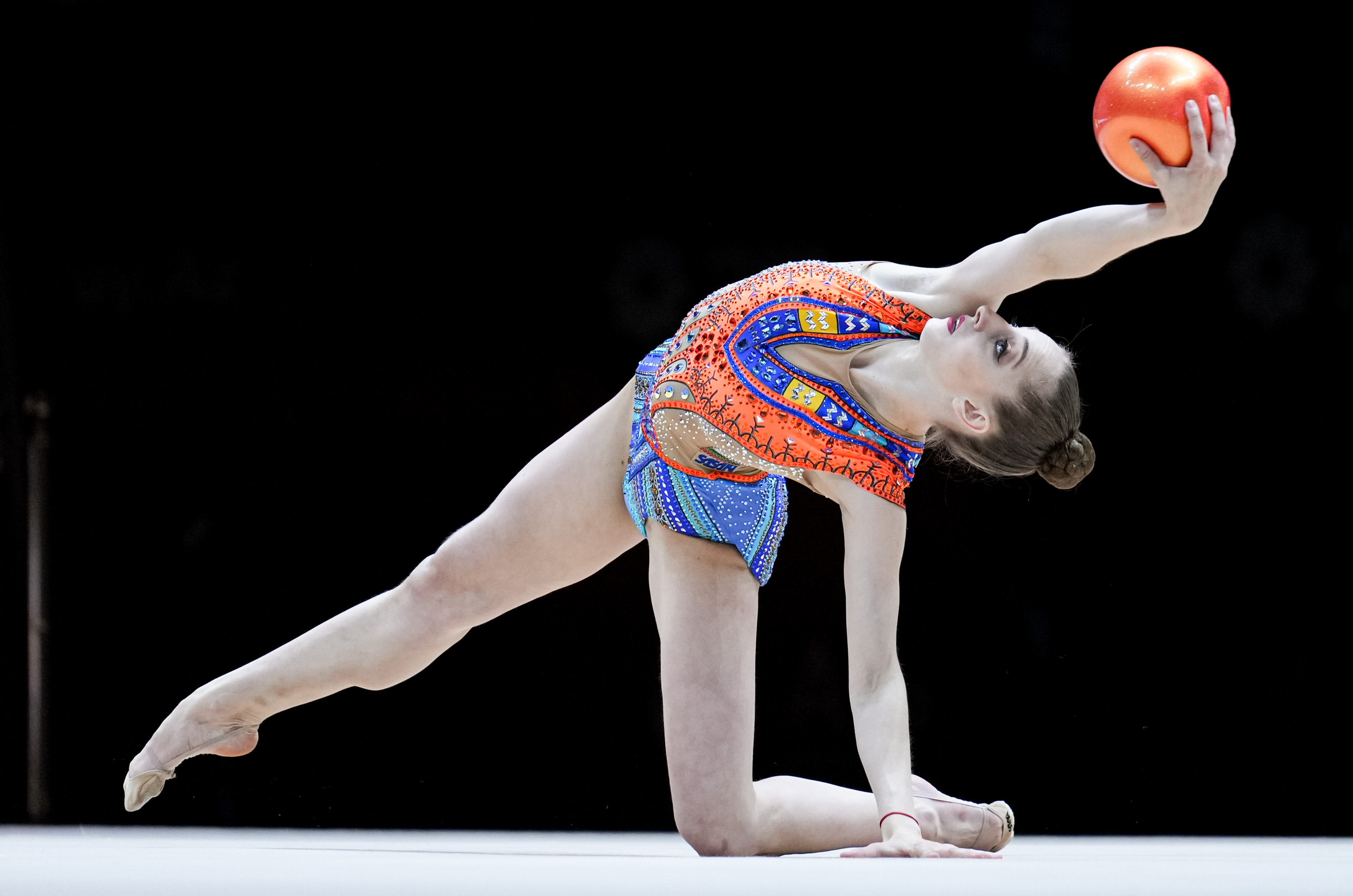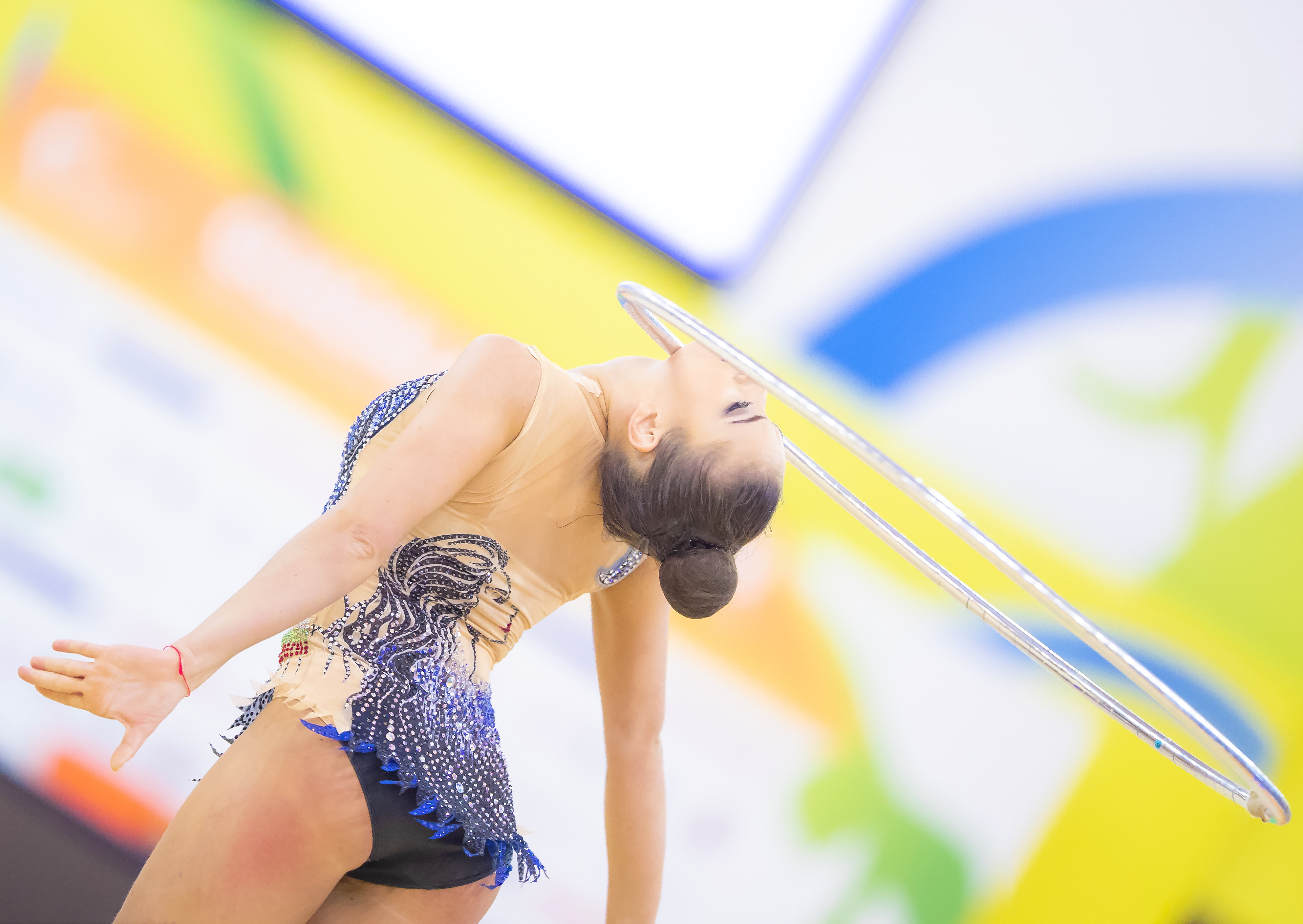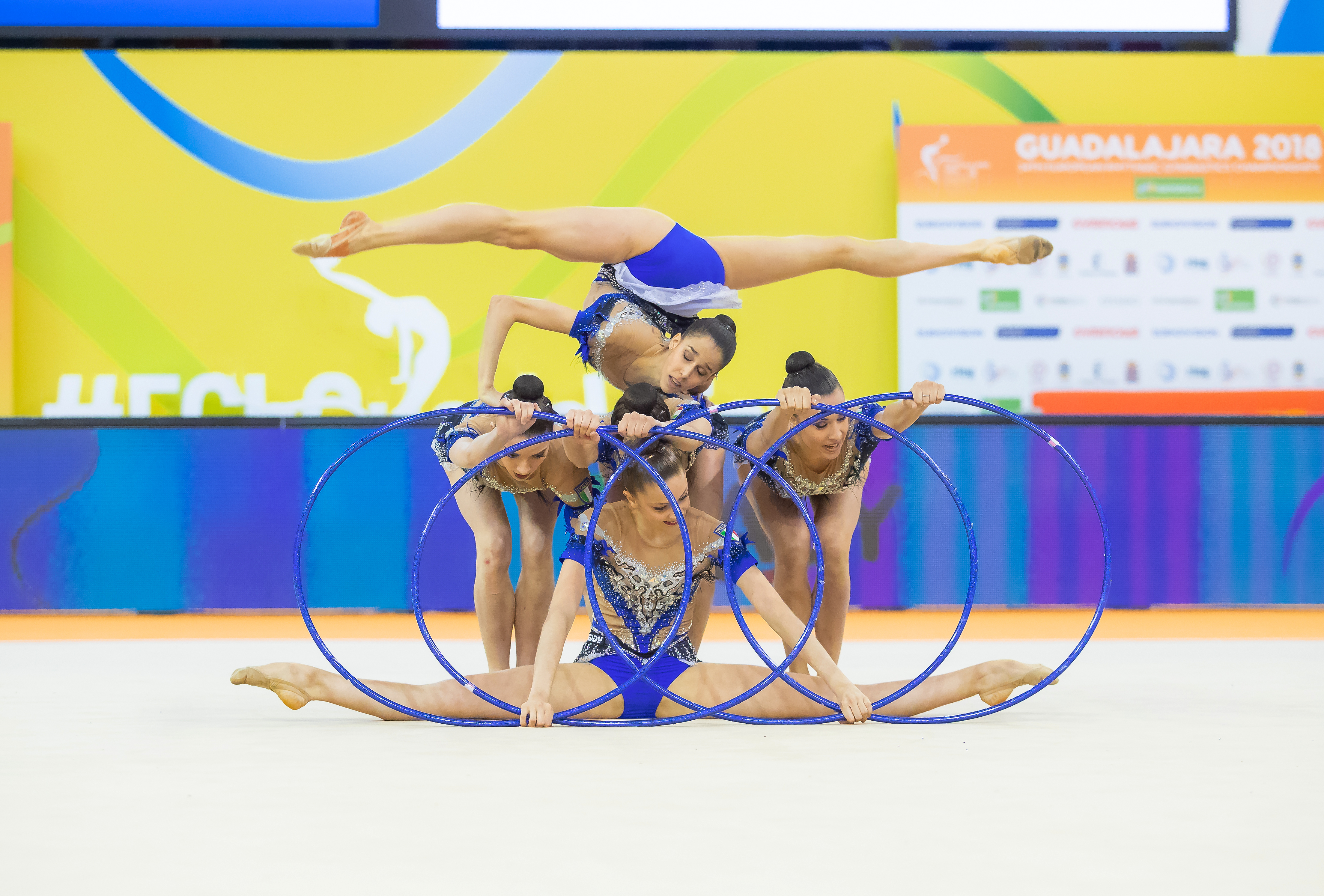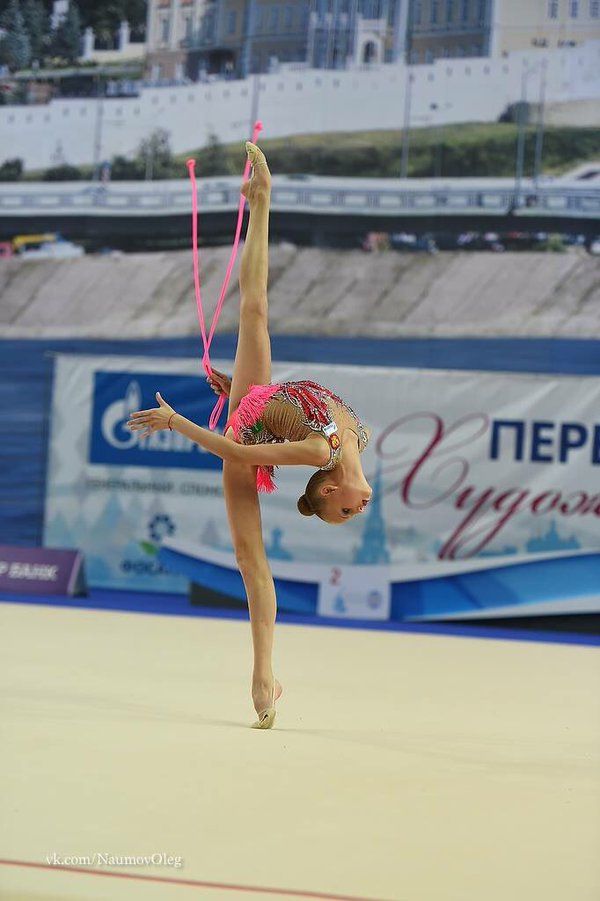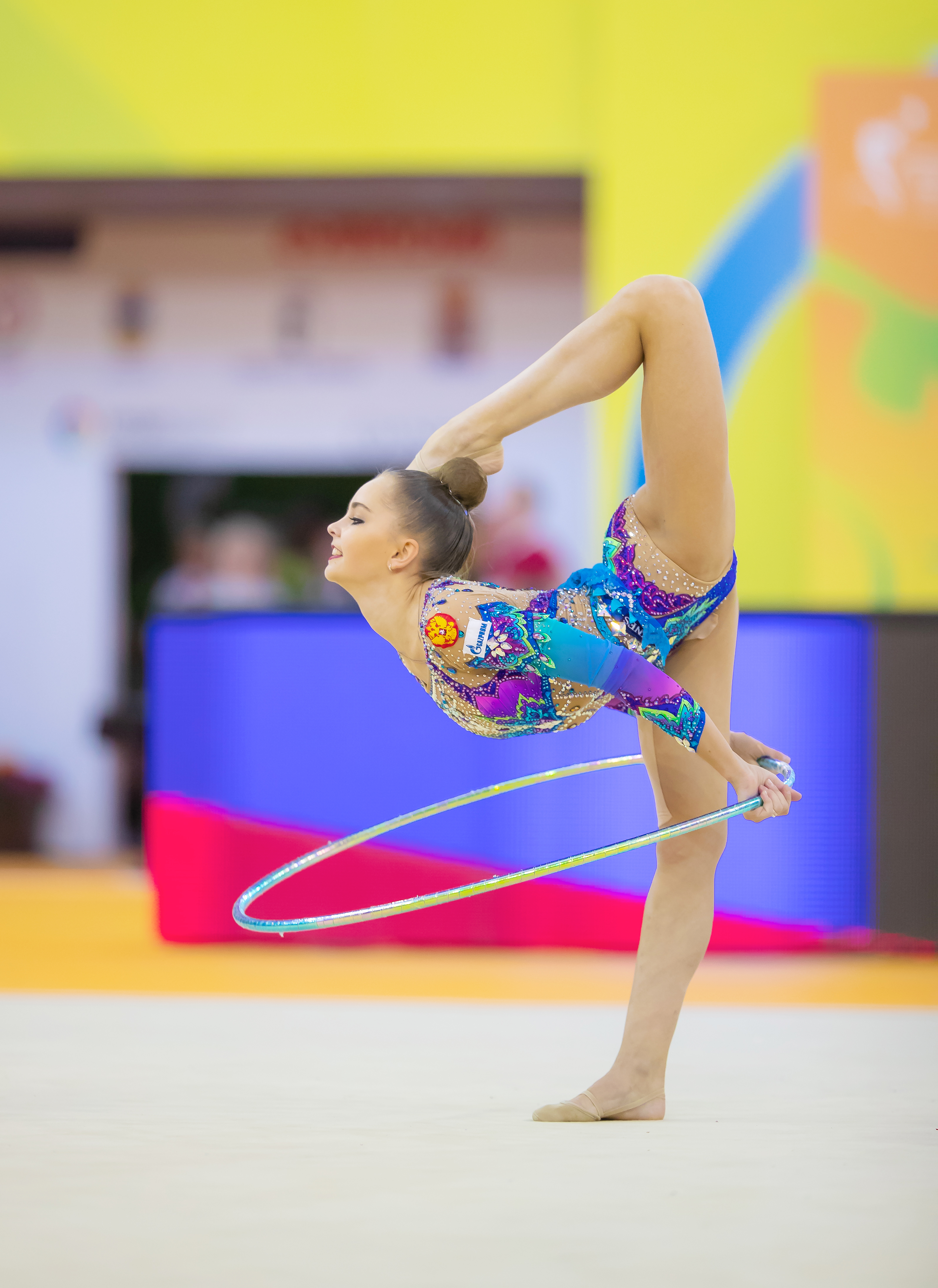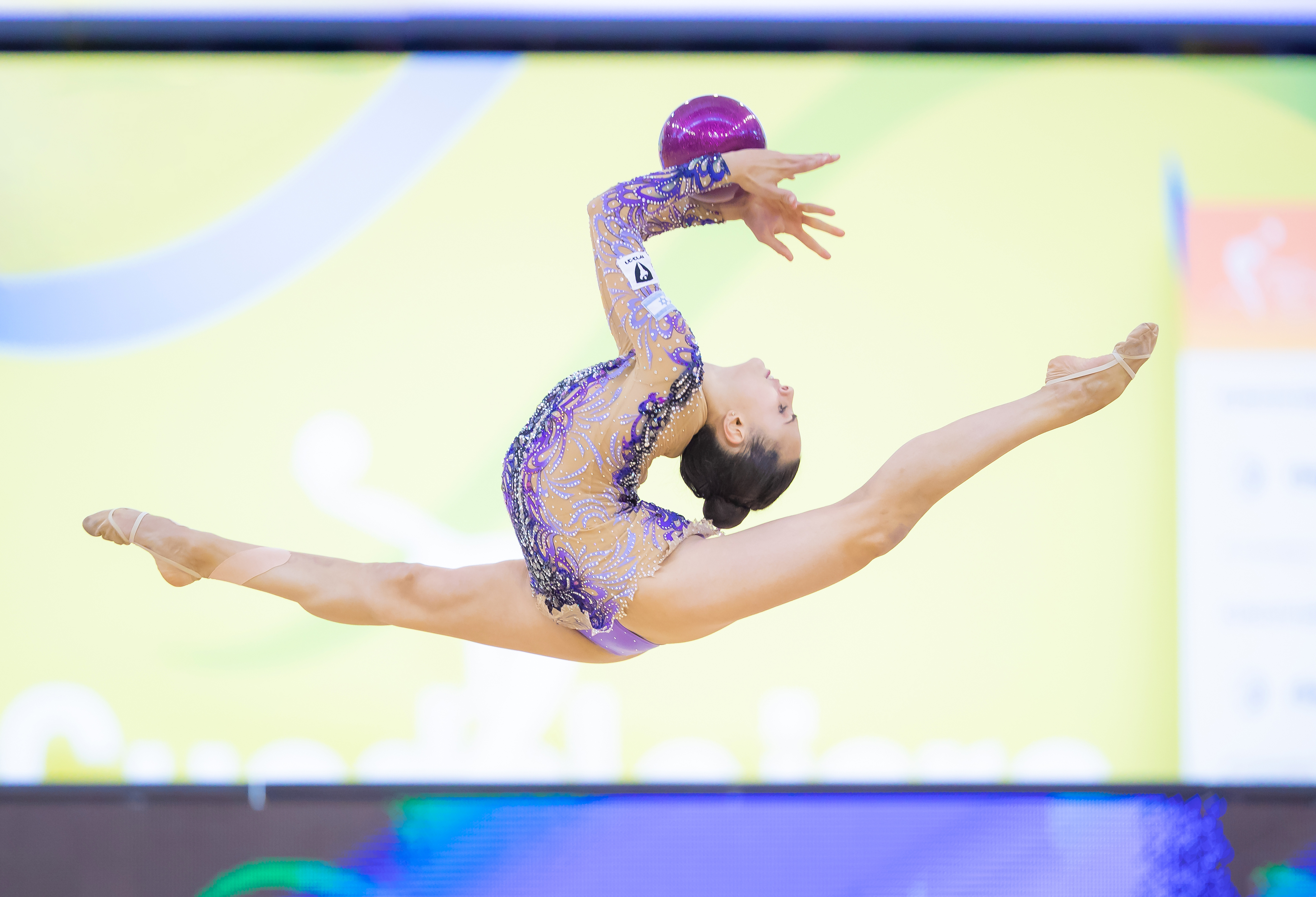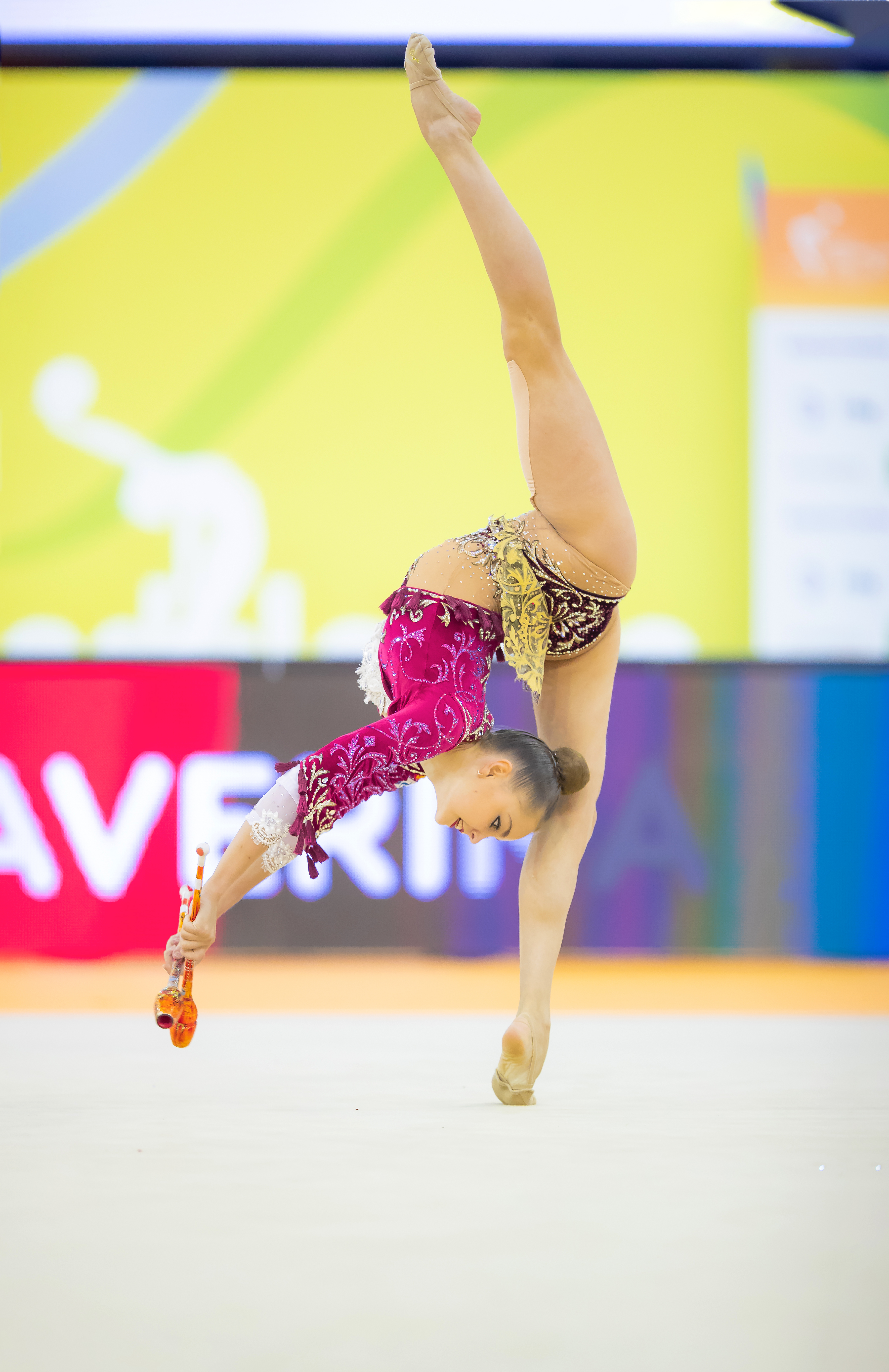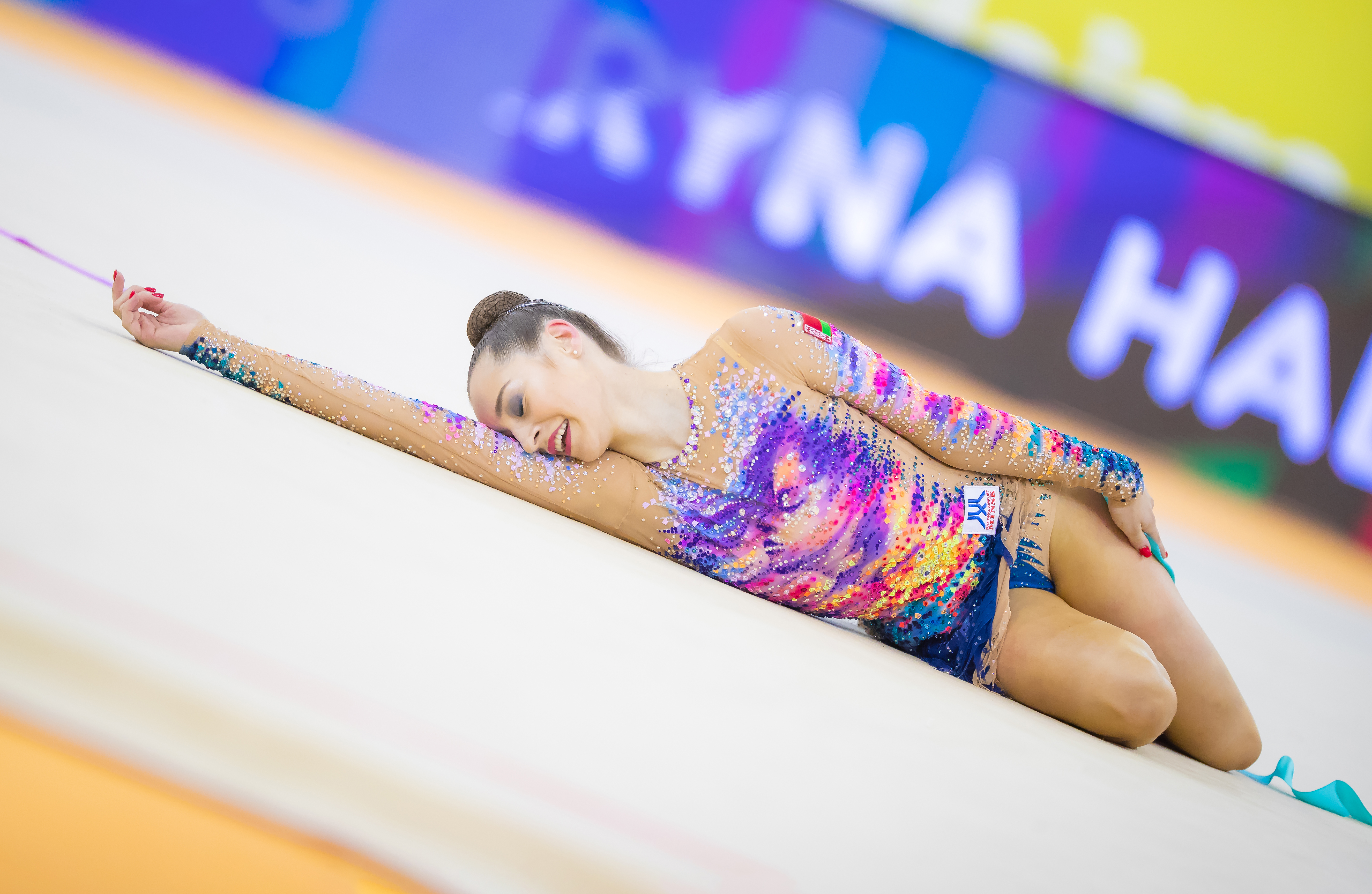Rhythmic Gymnastics, a symbiosis of beauty, art and sport!
This elegant discipline has been mesmerising fans all around the globe since the 1960s when the first World Championships were held. European gymnasts have always belonged to the very top in the world. Therefore, watching the action at the European Championships in Rhythmic Gymnastics can undoubtedly be compared to a World Championships or even a final of the Olympic Games.
Combining difficult gymnastics movements with high corporal flexibility, elements of ballet, dance and apparatus handling, rhythmic gymnasts present their exercises in perfect harmony with the music chosen, often displaying a high level of story-telling. Their femininity and elegance as well as artistic expression never fail to fascinate the public.
European Gymnastics organises European Championships every year, with the format alternating between odd and even years. Both junior and senior gymnasts get to compete. European Gymnastics is also proud of the other activities they organise: an annual training camp for girls aged 10 to 12 under the guidance of the world’s best experts and workshops and seminars of different topics to increase the knowledge about the sport, its rules and competitions in our continent.
Only open to female participants, Rhythmic Gymnastics is split in two categories: individuals and groups.
Newsletter

Introduction
Welcome to the page of Rhythmic Gymnastics and its Technical Committee!
Paragraph
Summary
Performing four different routines, individual gymnasts compete for medals in the all-around competition where their four scores are combined and in the apparatus finals where they aim to be the best with one specific apparatus.
Summary
5 gymnasts perform in a group exercise, with a 6th gymnast being the reserve, emphasising the importance of collaborating in harmony with the apparatus and the music.
Each group performs two routines, one with 5 x the same apparatus, the other with a mix of 3 and 2 apparatus.
Highly spectacular, group competitions give the audience the chance to truly get behind their favourite country and let general sports fan be amazed with the fast exchanges and extreme coordination needed for a successful performance.
Summary
Playful, the rope has a quick and explosive character which the gymnast needs to handle skilfully and with elegance. The technical movements are executed at varying rhythms and with great variety in direction, plane and speed.
Summary
The hoops weights at least 300 gr and the inner diameter must be between 80 and 90 cm. Gymnasts need good orientation to handle an apparatus of this size which they need to throw and catch and roll over the body and the floor, often passing through it themselves. The variety of possible skills permits a lot of creativity.
Summary
With a weight of 400 gr minimum, the ball allows for bounces, rolling and throws, showing apparatus handling skills most football players can only dream of. Obviously very dynamic apparatus offering a lot of variety, gymnast must use both hands and work on the whole floor area whilst showing continuous flowing movement.
Summary
Working with the clubs, the gymnast must synchronise her body movements, not with one, but with two apparatus. This is more interesting but also more difficult. Often the two apparatus move in different directions, requiring the highest form of coordination from the gymnast.
Summary
With its length of 6 metres, the ribbon quite often is the most dramatic apparatus on the programme. Dynamic and entertaining, ribbon exercises require absolute amplitude of movements as not to get caught up in the ribbon which needs to stay in motion continuously.
